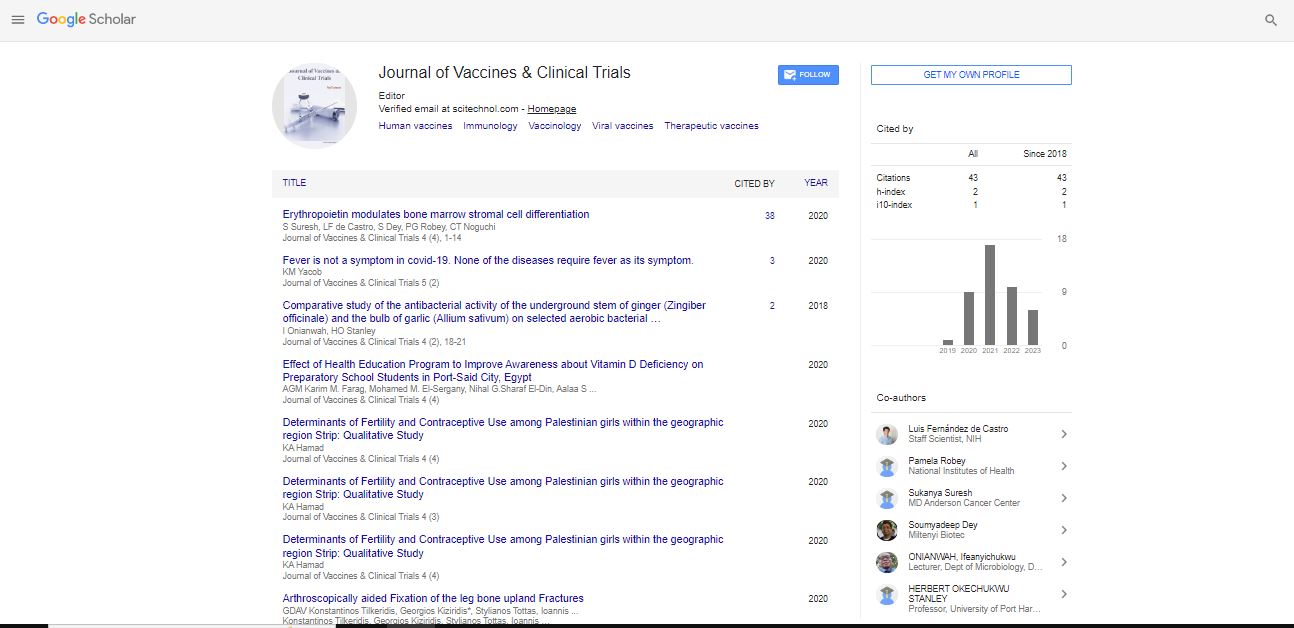Perspective, Jou Of Vac Cli Tr Vol: 7 Issue: 1
The Mechanisms of Antibiotic Resistance Spread by Plasmids
Camilla Roseboom*
1Department of Molecular Medicine and Byrd Alzheimer's Research Institute, Morsani College of Medicine, University of South Florida, Tampa, FL, 33612, USA
*Corresponding Author: Camilla Roseboom
Department of Molecular Medicine
and Byrd Alzheimer's Research Institute, Morsani College of Medicine, University
of South Florida, Tampa, FL, 33612, USA
E-mail: roseboomcamil@usf.edu
Received date: 24 February, 2023, Manuscript No. JVCT-23-92760;
Editor assigned date: 28 February, 2023, PreQC No. JVCT-23-92760(PQ);
Reviewed date: 13 March, 2023, QCNo JVCT-23-92760;
Revised date: 21 March, 2023, Manuscript No. JVCT-23-92760 (R);
Published date: 30 March, 2023, DOI: 10.4172/JVCT.100063.
Citation: Roseboom C (2023) The Mechanisms of Antibiotic Resistance Spread by Plasmids. Jou of Vac Cli Tr 7:1.
Description
Antibiotic resistance is a major public health concern, and plasmids play a significant role in the spread of antibiotic resistance genes among bacteria. Plasmids can transfer antibiotic resistance genes horizontally between bacteria, promoting the emergence and spread of antibiotic-resistant strains. The transfer of antibiotic resistance genes via plasmids can occur through mechanisms such as conjugation transduction, transformation, and transposition. Efforts to combat antibiotic resistance must address the role of plasmids in gene transfer and the spread of resistance genes.
Antibiotic resistance
Antibiotic resistance occurs when bacteria develop the ability to resist the effects of antibiotics. This means that antibiotics that were once effective in treating bacterial infections become less effective, or even completely ineffective. Antibiotic resistance is a significant public health concern, as it can lead to increased morbidity, mortality, and healthcare costs.
Plasmids
Plasmids are small, circular pieces of DNA that exist separately from the bacterial chromosome. They can carry and transfer genes between bacteria, including antibiotic resistance genes. Plasmids can replicate independently, making them ideal vectors for gene transfer. They can also integrate into the bacterial chromosome or exist as extra-chromosomal elements. Plasmids are widely used in genetic engineering and biotechnology to introduce new genes into bacteria for research, industrial or medical purposes.
Mechanisms
The following are some of the mechanisms by which antibiotic resistance spreads through plasmids:
Mechanisms by which antibiotic resistance spreads through plasmids
Conjugation: Conjugative plasmids possess the machinery required for their transfer from a donor cell to a recipient cell. Antibiotic resistance genes located on conjugative plasmids can be transferred to recipient bacteria, leading to the spread of antibiotic resistance.
Transduction: Transducing phages can transfer genetic material, including antibiotic resistance genes, between bacteria. When a phage infects a bacterial cell, it may incorporate a fragment of the host cell's DNA, including plasmids carrying antibiotic resistance genes. This DNA is then transferred to a new bacterial host during subsequent phage infections.
Transformation: Transformation involves the uptake and incorporation of free DNA by bacteria. When bacteria are exposed to environmental stress such as antibiotic exposure, they may become competent to take up extracellular DNA, including plasmids carrying antibiotic resistance genes.
Transposition: Some plasmids contain transposons, which are mobile genetic elements that can move within and between DNA molecules. Transposons can carry antibiotic resistance genes and move them from one plasmid to another or from a plasmid to the bacterial chromosome, leading to the spread of antibiotic resistance.
Conclusion
Antibiotic resistance is a growing public health threat, and plasmids play a significant role in its spread. The ability of plasmids to transfer antibiotic resistance genes between bacteria through horizontal gene transfer is a major concern. Addressing the spread of antibiotic resistance through plasmids requires a multi-faceted approach, including appropriate antibiotic use, infection prevention and control measures, and the development of new antibiotics and alternative therapies. Understanding the mechanisms of antibiotic resistance spread by plasmids is crucial in developing effective strategies to mitigate its impact on human health.
 Spanish
Spanish  Chinese
Chinese  Russian
Russian  German
German  French
French  Japanese
Japanese  Portuguese
Portuguese  Hindi
Hindi 